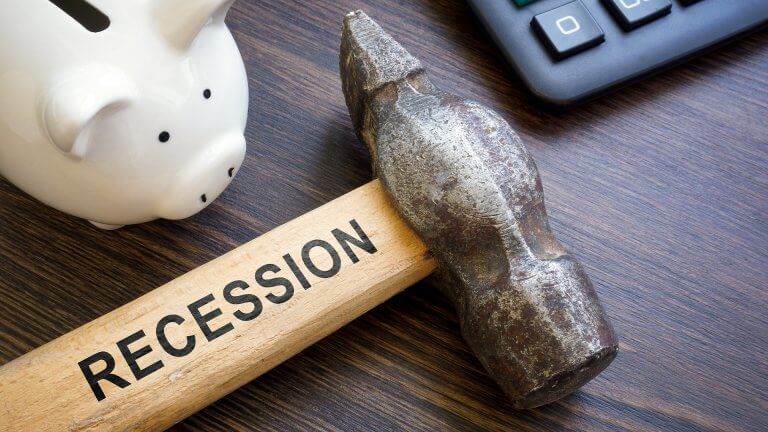The financial sector is fundamentally unpredictable, and even the most careful credit risk evaluations cannot always forecast unanticipated disasters. When such occurrences occur, they can have a significant influence on borrowers’ capacity to repay their debts, increasing lenders’ credit risk.
Financial institutions must have adequate crisis management plans in place to traverse these unknown seas.
Recognising the Signs of Credit Risk in Crisis
The first step in managing unexpected credit risk is recognising the signs early on. A crisis can take various forms, including economic downturns, natural disasters, or unforeseen market disruptions. Here are some key indicators of increased credit risk during a crisis:
1. Rising Unemployment: Increased unemployment rates frequently result in lower income for borrowers, making it more difficult for them to pay their financial responsibilities. Consumer confidence may suffer as a result of economic uncertainty caused by high unemployment rates. Borrowers may become more cautious, increasing their risk of loan default.
2. Declining Asset Values: Collateral insufficiency occurs when the value of collateral assets falls below the loan amount. In such circumstances, the lender may not be able to completely recover the outstanding amount if the borrower defaults.
3. Market Volatility: Market volatility frequently causes uncertainty and a loss of borrower trust. Borrowers may become more cautious and unwilling to incur additional debt, or they may find it difficult to pay existing financial commitments. Market volatility may interrupt operations, impair cash flow, and lead to financial trouble for organisations. This can raise the likelihood of a company loan default.
Strategies for Responding to Unexpected Credit Risk
Conduct stress tests and scenario analysis to see how different crisis situations may impact your loan portfolio. This enables lenders to forecast possible losses and take preventative measures.
Keep channels of communication open with borrowers. Encourage them to contact you if they anticipate financial problems. Transparent communication can result in mutually beneficial solutions and help to avoid defaults.
Borrowers experiencing financial difficulties should be given loan modification choices, such as lower interest rates, extended loan periods, or interim payment deferrals. These methods can give immediate relief while also lowering the chance of a default.
Implement continuous credit monitoring systems to discover early symptoms of borrowers’ trouble. Real-time data can assist lenders in making informed judgements and taking necessary action. To avoid concentration risk, diversify your lending portfolio across sectors and locations. A well-diversified portfolio is more resilient to sector-specific disasters.
Keep reserve money on hand to offset unforeseen credit losses. Adequate reserves can assist in absorbing losses during a crisis while maintaining the institution’s stability. Assess the value and condition of collateral assets on a regular basis. This enables lenders to make more informed judgements about collateralised loans and control possible losses.
During a crisis, stay up to date on regulatory changes and government involvement. Comply with all applicable legislation and, where appropriate, utilise government programmes. Based on changing conditions, reevaluate the risk ratings of loans in your portfolio. Changing risk ratings can help you allocate resources more efficiently and manage risks.
Create recovery strategies that outline what measures to take if credit risk develops considerably. A well-defined strategy in place can help to speed up decision-making during a crisis.
The Role of Technology in Crisis Management
In today’s financial market, technology is critical in minimising unanticipated credit risk. Financial institutions can use Provenir’s credit risk decisioning software, advanced analytics, artificial intelligence, and machine learning to:
- Predict probable credit risk occurrences in real-time by analysing massive databases.
- Support the orchestration of data and risk decision-making processes in individuality, credit, and deception in order to assist in getting ahead and remaining on top of risk.
- To detect borrower trouble, automate credit monitoring and early warning systems.
- Individual borrower profiles should be used to tailor risk reduction techniques.
- Improve the precision of stress testing and scenario analysis.
- Improve communication and data-sharing efficiency with borrowers.
During a crisis, technology enables lenders to respond quickly and efficiently to credit risk problems, resulting in a more resilient financial sector.
Conclusion
Credit risk is an unavoidable aspect of the financial business. However, how financial organisations react to these risks may make or break them. Lenders may limit the impact of unanticipated crises on their loan portfolios by recognising early warning indicators, taking proactive measures, and using technology. Lessons from previous financial crises highlight the significance of openness, diversity, and regulatory compliance in crisis management.
Finally, a well-prepared and responsive strategy to credit risk during times of crisis not only protects lenders’ financial stability but also assists borrowers in navigating difficult situations. Crisis management is a dynamic process that necessitates continual assessment and changes to maintain financial institutions and the broader economy’s long-term resilience.























